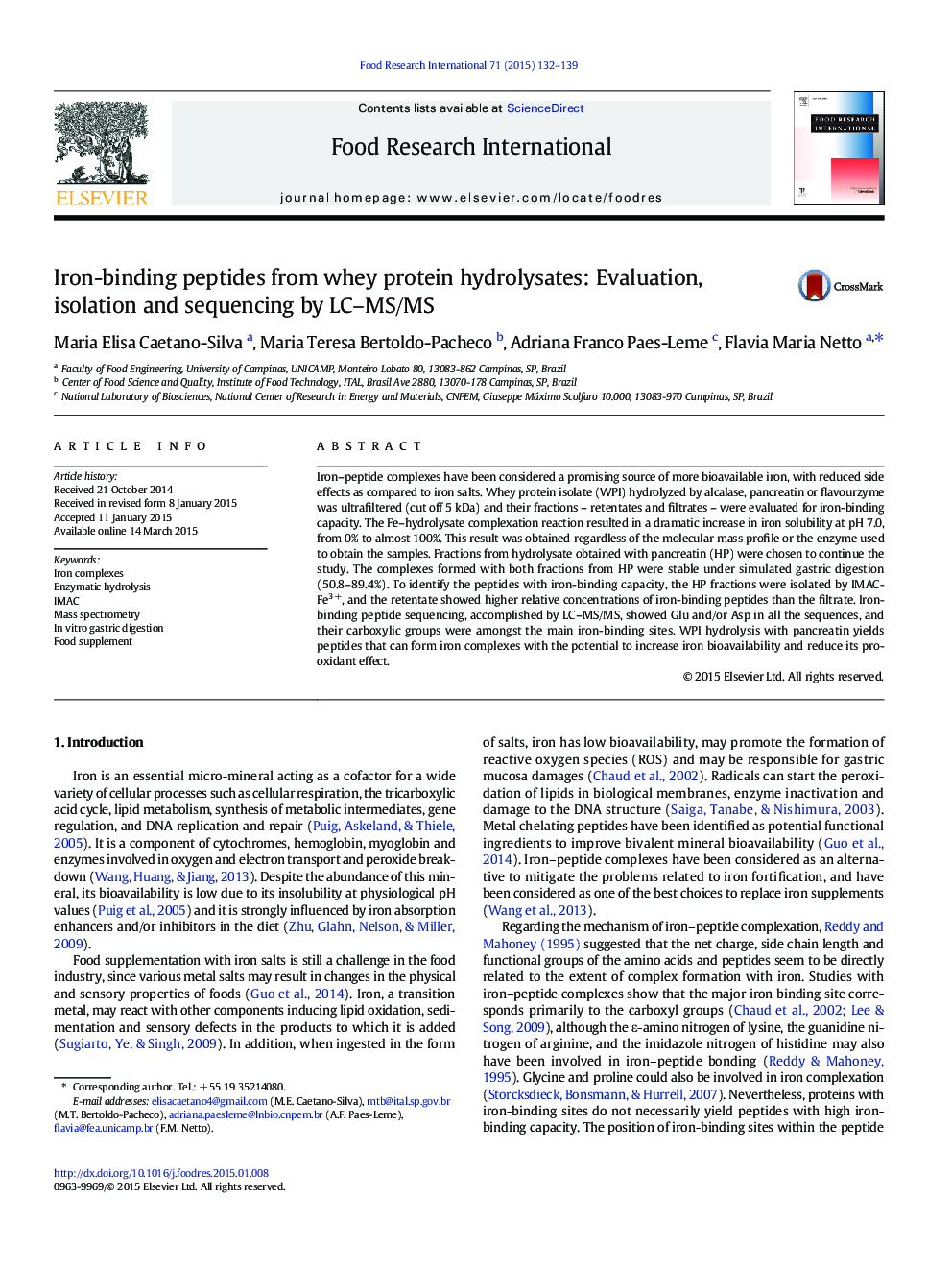| کد مقاله | کد نشریه | سال انتشار | مقاله انگلیسی | نسخه تمام متن |
|---|---|---|---|---|
| 4561548 | 1628475 | 2015 | 8 صفحه PDF | دانلود رایگان |

• WPI hydrolysates with different enzymes were studied to obtain Fe–peptide complexes.
• WPI hydrolysates showed high iron-binding capacity despite the enzyme used.
• Most of identified Fe-binding peptides are from β-Lg: f(42–57) and f(124–135).
• The complexes showed partial resistance to simulated gastric digestion.
• Complexes potentially increase Fe bioavailability and lower its pro-oxidant effect.
Iron–peptide complexes have been considered a promising source of more bioavailable iron, with reduced side effects as compared to iron salts. Whey protein isolate (WPI) hydrolyzed by alcalase, pancreatin or flavourzyme was ultrafiltered (cut off 5 kDa) and their fractions – retentates and filtrates – were evaluated for iron-binding capacity. The Fe–hydrolysate complexation reaction resulted in a dramatic increase in iron solubility at pH 7.0, from 0% to almost 100%. This result was obtained regardless of the molecular mass profile or the enzyme used to obtain the samples. Fractions from hydrolysate obtained with pancreatin (HP) were chosen to continue the study. The complexes formed with both fractions from HP were stable under simulated gastric digestion (50.8–89.4%). To identify the peptides with iron-binding capacity, the HP fractions were isolated by IMAC-Fe3 +, and the retentate showed higher relative concentrations of iron-binding peptides than the filtrate. Iron-binding peptide sequencing, accomplished by LC–MS/MS, showed Glu and/or Asp in all the sequences, and their carboxylic groups were amongst the main iron-binding sites. WPI hydrolysis with pancreatin yields peptides that can form iron complexes with the potential to increase iron bioavailability and reduce its pro-oxidant effect.
Journal: Food Research International - Volume 71, May 2015, Pages 132–139